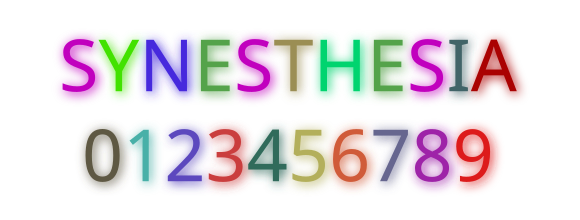The word synesthesia is derived from the ancient Greek "together" and "sensation". Synesthesia is a neurologically based condition where stimulation of one sensory or cognitive pathway leads to automatic and involuntary experiences in a second pathway.
The most studied and most common form of synesthesia is known as Grapheme-Colour Synesthesia, where letters or numbers appear to be inheritantly coloured. An example of how a person with this condition may perceive letters and numbers is shown below:

Interestingly synesthesia runs strongly in families and can also be reported by people during a seizure related to temporal lobe epilepsy, or in people who have had a stroke, or in people who suffer from blindness or deafness.
Apparently over 60 types of synesthesia have been reported, including Ordinal Linguistic Personification where ordered sequences (such as numbers or letters) have a distinct personality. Smells and sounds can also be linked with visual stimuli!
Recent neuroanatomical studies have shown that brain regions which process certain sensory modalities have increased connections to other cortical representations-in other words, their brains have additional connections which link 2 different senses together. So not only is this condition inheritently interesting, research into synesthesia may provide insights into cognitive and perceptual processes and pathways in the human brain.
Synesthesia can also provide insights into how language has developed and into the cognitive processes of learning and memory.